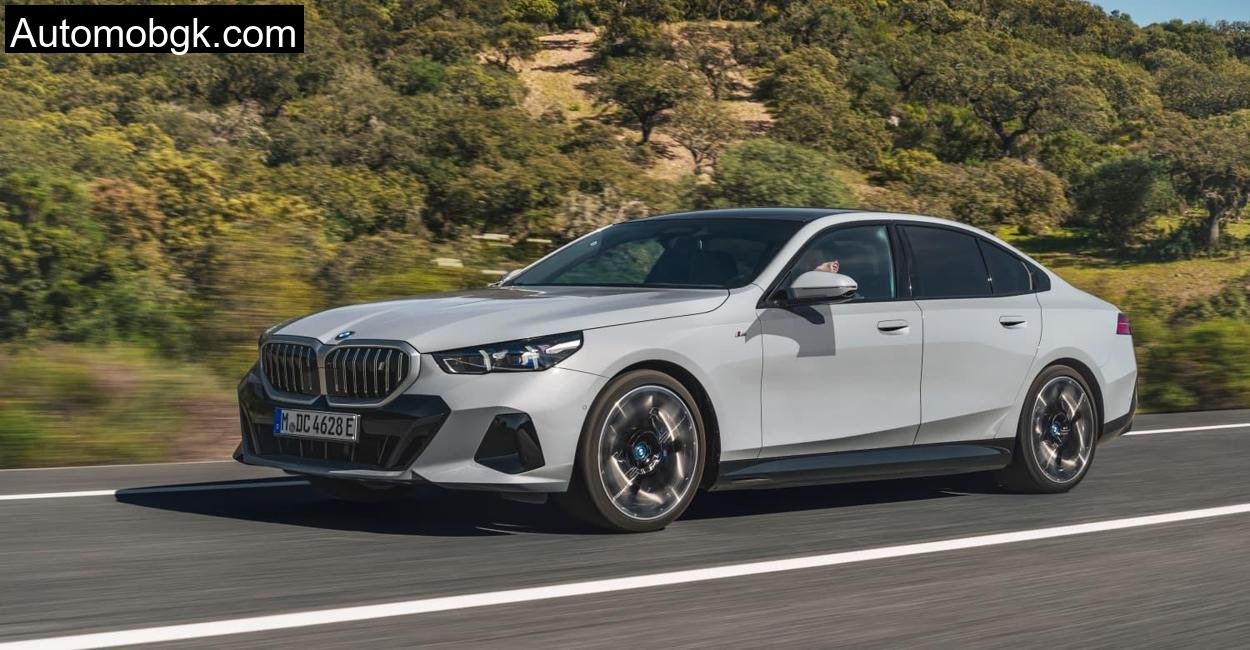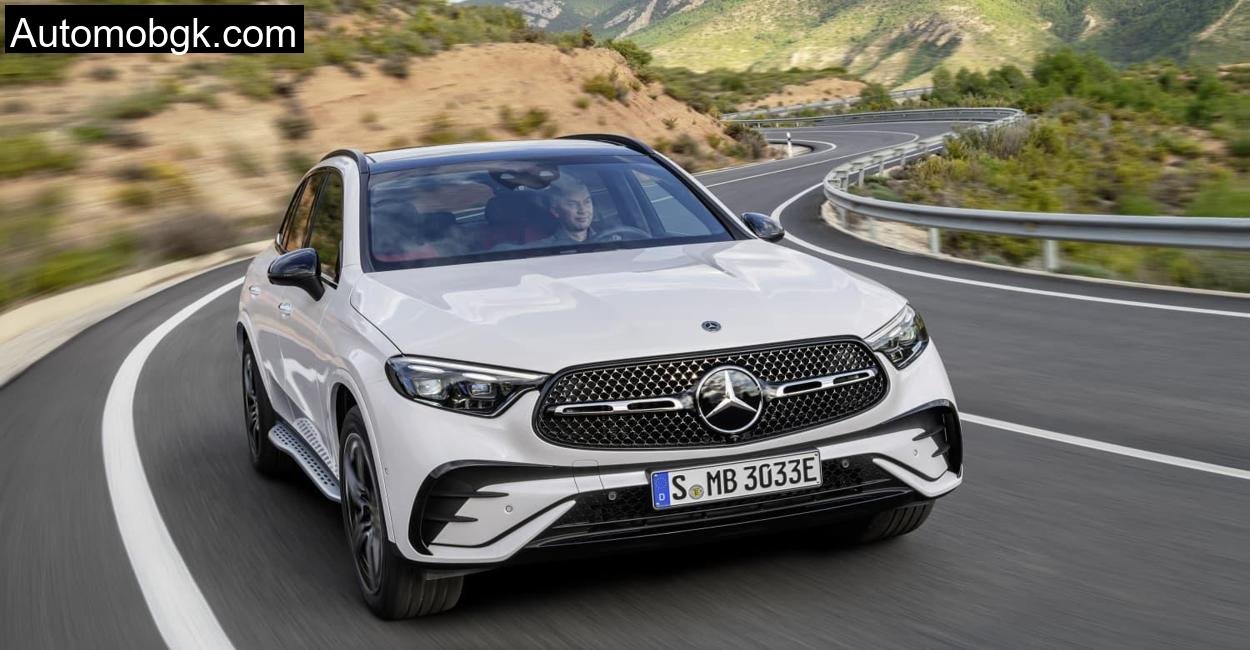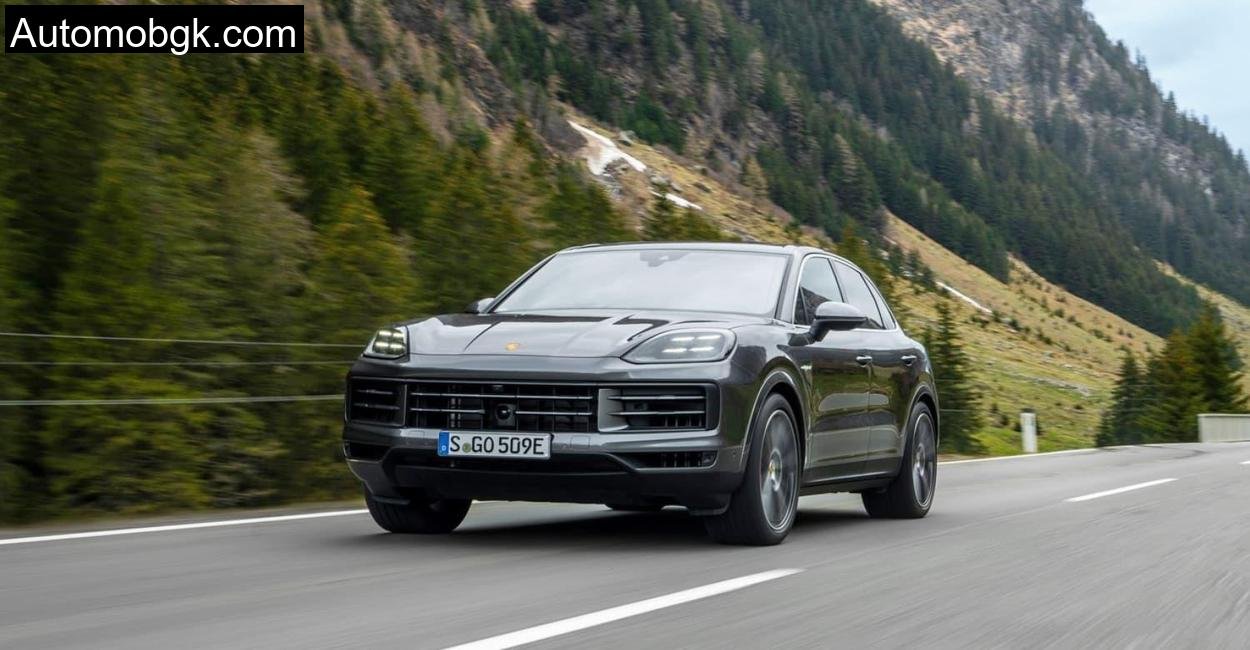Winding roads curl through dense beech forests, misty morning sun filtering between branches, casting a silver sheen on the tarmac. The Salzgitter Hills aren’t the Alps, but they are no gentle stroll either. The terrain is varied and challenging, the kind that whispers to performance cars, “Let’s see what you’ve got.”
And here, BMW’s latest all-electric executive sedan, the i5,showed up not to whisper back, but to roar silently through corners and across straightaways. I brought along the eDrive40 variant and the powerhouse M60 xDrive version to see how the Bavarians are reshaping luxury electric driving.
All-wheel steering at extra cost
The first thing I noticed maneuvering into the tight, cobbled lanes of Salzgitter-Bad was the i5’s agility. Despite measuring just over 5.06 meters in length, the car didn’t feel like a barge. Rear-axle steering, a €1,250 option, shrinks the turning radius by about 30 centimeters. It’s subtle in execution but powerful in effect.
You feel it most when making three-point turns or navigating narrow village roads. At low speeds, the rear wheels turn opposite to the front to help pivot the car. At higher speeds, they turn in the same direction to stabilize lane changes. It never feels artificial. Just smooth. Controlled. BMW smartly caps the steering angle at 2.5 degrees, a reminder that this is no novelty tech, but an enhancement rooted in precision driving.
With the M Sport suspension (€450 extra), the chassis hugs the road more assertively, and the self-leveling air suspension on the rear axle soaks up uneven terrain without transmitting the rumbles to your spine. It’s comfortable, sure, but never vague.
BMW i5: True driving pleasure
BMW didn’t forget their tagline, Sheer Driving Pleasure. Even at 2.2 tons, the i5 dances. The eDrive40’s 250 kW motor mounted on the rear axle delivers 0–100 km/h in 6.0 seconds. I floored it while exiting a sharp descent into a short uphill straight. The response was instantaneous, the traction unshakable.
The handling is balanced and confidence-inspiring. The evasive maneuvering test confirms it: minimal body roll and reliable feedback through the wheel. Push it harder, and understeer gently nudges you, not aggressively. It’s a cruiser with bite.
What stayed with me was the refinement. 60–100 km/h in just 3.0 seconds and 80–120 in 3.8,all delivered with whisper-quiet calmness. The i5 doesn’t scream. It surges. There’s power on tap but never drama. BMW has managed something few others in the EV world can match, true soul.
Recuperation or rolling
BMW’s current-excited synchronous motor doesn’t use rare earths, and the regenerative braking is adaptive. In the Salzgitter Hills, I toggled between modes. The lowest level allowed “sailing”, coasting without power, which was perfect on long downhill stretches.
Switching back to adaptive regen on twistier terrain felt like flipping a switch from elegance to energy hunter. The car began reading traffic, terrain, and even map data. It slowed gently before curves and traffic zones, recuperating energy smoothly. Once you trust it, it becomes addictive. You barely touch the brake.
The torque boost mode (activated with a paddle) adds 30 Nm, making overtakes seamless even uphill. It’s engineering that encourages smart driving, and lets you enjoy the scenery while still keeping your right foot happy.
The test range: 500 kilometers
BMW claims a range of up to 582 km (WLTP), but I was keen on real-world numbers. In mixed terrain, with both spirited and relaxed driving, the i5 eDrive40 returned a consumption of 19.1 kWh/100 km. That’s good for a realistic 500 km on a full 81.2 kWh net capacity battery.
And when range anxiety strikes, there’s “Max Range” mode. I tested it while descending back toward Goslar, it limits top speed to 90 km/h and dims down all non-essentials. It’s more effective than you’d think, boosting the remaining range by up to 25%.
Charging at a CCS station in the outskirts of Braunschweig, the i5 peaked at 208.4 kW and averaged 135.7 kW, a 10–80% top-up in exactly 30 minutes. That’s fast enough for a coffee and a quick photo break.
Modern interior with large displays
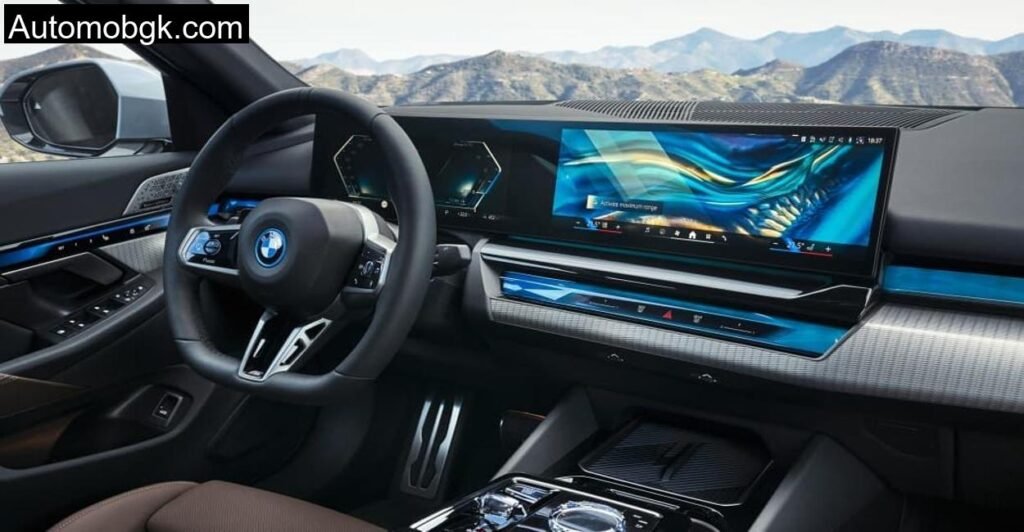
Step inside and it’s classic BMW, but with a digital twist. The “Curved Display” spans the dashboard like a floating tech gallery: 12.3-inch for the driver, 14.9-inch for infotainment. It’s immersive, but there’s a learning curve.
No more physical climate control buttons. Everything is now touchscreen. It looks premium, sure, but sometimes you just miss the tactile confidence of a knob. Especially when adjusting temperature mid-corner.
The iDrive controller, once the gold standard, is now too sensitive. Touch it and it reacts before you’re ready. Press wrong, and you’re diving into submenus you didn’t want. The piano-black flush buttons around it? Smudge-prone and easy to misclick.
But entertainment is top-tier. I streamed games on the large screen while waiting for a charge, and the Harman Kardon sound system turned the cabin into a private studio. Rear passengers didn’t complain either, with ample legroom and plush seats.
Driving hands-free on the highway
Autobahn Pilot is where the i5 truly flexes future tech. From Salzgitter to Kassel, I barely touched the wheel. At speeds up to 130 km/h, the system managed lane, speed, and distance. It’s €850, but only with the Driver Assistant Pro and Innovation Package, so really €4,950 in total.
Still, it’s worth it. The most jaw-dropping feature? Overtaking by gaze. Approaching a slower car, I glanced at the left mirror. That’s it. The car checked the blind spot, activated the indicator, changed lanes, and passed cleanly.
This level of trust between human and machine is still rare. But the i5 pulled it off, no jerks, no doubt, no disengagement.
The space is good
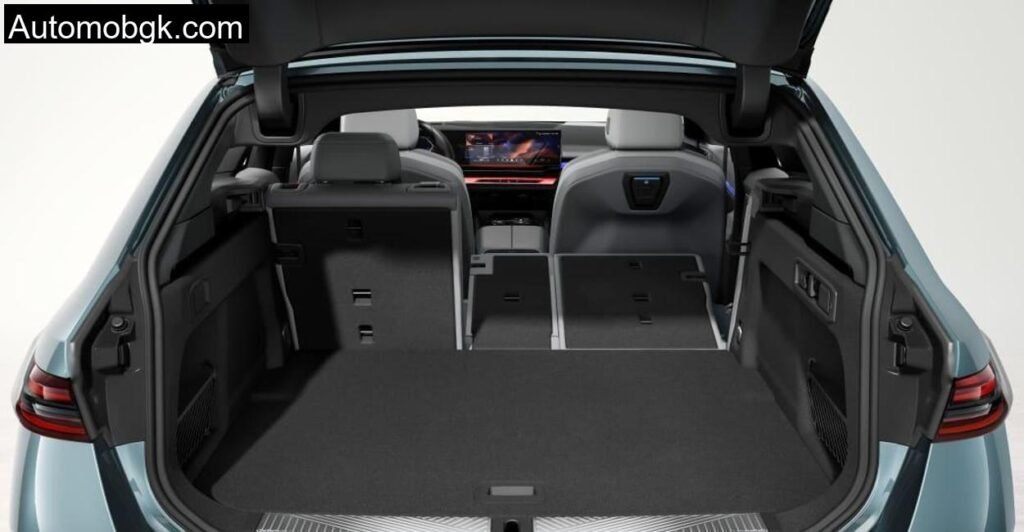
Front seats offer limousine comfort. At 6’2″, I had headroom to spare, and the leather seats are supportive even after a four-hour drive. The rear bench is wide, with nearly as much legroom as a 7 Series. The only minus? The floor tunnel is raised, a holdover from the combustion platform, but it doesn’t ruin things.
The trunk, at 490 liters, is 50 liters down from the petrol variant. Still, it swallowed two duffle bags, a tripod, and a full camera kit with ease. For daily or family use, the i5 holds its ground easily.
i5 M60 xDrive: The performance version
Switch to the M60 xDrive and the demeanor changes instantly. With 442 kW (601 hp) and a 0–100 km/h time of 3.8 seconds, this is an executive rocket ship.
On the climb up the Lichtenberge ridge, I opened it up. Instant torque, all-wheel traction, and neck-snapping acceleration. The soundtrack is synthetic but satisfying, and the acceleration brutal yet controlled. You never feel overwhelmed, just exhilarated.
Cornering becomes art. The M adaptive suspension and sportier tuning make it feel like a 3 Series with a master’s degree. This is the electric M car people have been waiting for.
i5 Touring: Top-level electric station wagon
Coming in March 2025, the i5 Touring brings wagon practicality to this electric game. Starting at €72,200, it offers the same drivetrain options and tech but with a larger boot and more versatility.
For families or road trip lovers, the Touring is the pick. I briefly sat in one during the preview, the longer roofline doesn’t affect aesthetics; if anything, it looks more athletic. Same interior, same battery, same performance. More space.
Technical Specification
| Specification | BMW i5 eDrive40 |
| Power Output | 250 kW / 340 hp |
| Torque | 400 Nm (430 Nm with boost) |
| 0–100 km/h | 6.0 seconds |
| Top Speed | 193 km/h (electronically) |
| Battery Capacity (Net) | 81.2 kWh |
| Real-world Range | 500 km |
| Charging (10–80%) | 30 minutes (max 208.4 kW) |
| Length | 5060 mm |
| Drive Layout | Rear-wheel / xDrive AWD |
| Trunk Volume | 490 liters |
Conclusion
The BMW i5 isn’t just another electric sedan, it’s the bridge between heritage and the future. It keeps the 5 Series charm alive with modern tech and electric soul. On the Salzgitter Hills, it proved that electrification doesn’t mean sacrificing engagement.
Whether you choose the poised eDrive40, the ballistic M60 xDrive, or wait for the Touring, the i5 is a statement. Not just of where BMW is heading, but how gracefully it’s getting there.
Is the BMW i5 good for long-distance driving?
With up to 500 km real-world range, comfortable seating, adaptive cruise, and fast charging, it’s ideal for highway cruising.
Can the BMW i5 be driven hands-free legally?
Yes, on German highways up to 130 km/h using the Autobahn Pilot, provided the driver remains attentive.
Does the i5 feel like a traditional 5 Series?
Very much so. The handling, comfort, and quality are unmistakably 5 Series, just quieter and cleaner.
